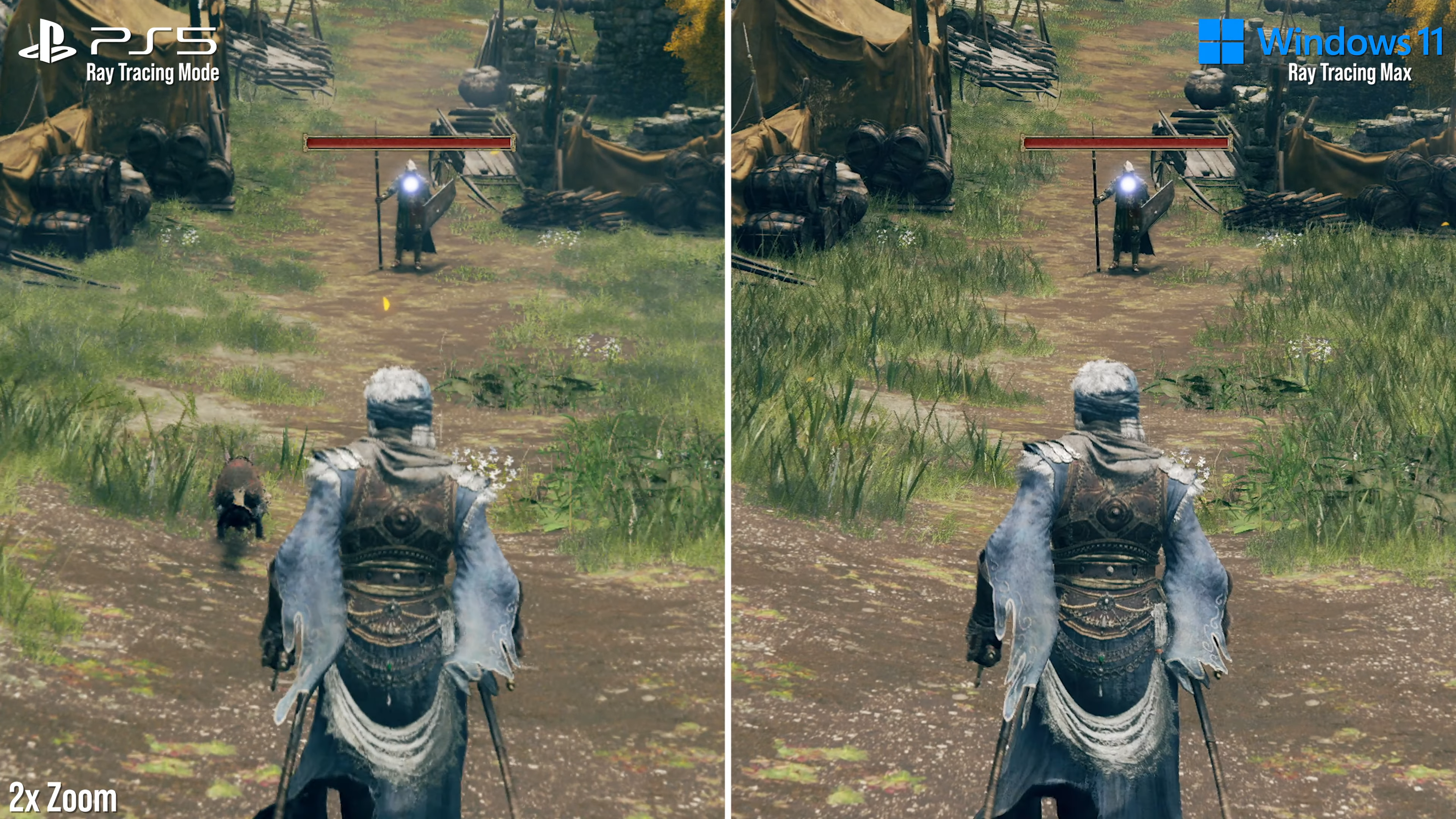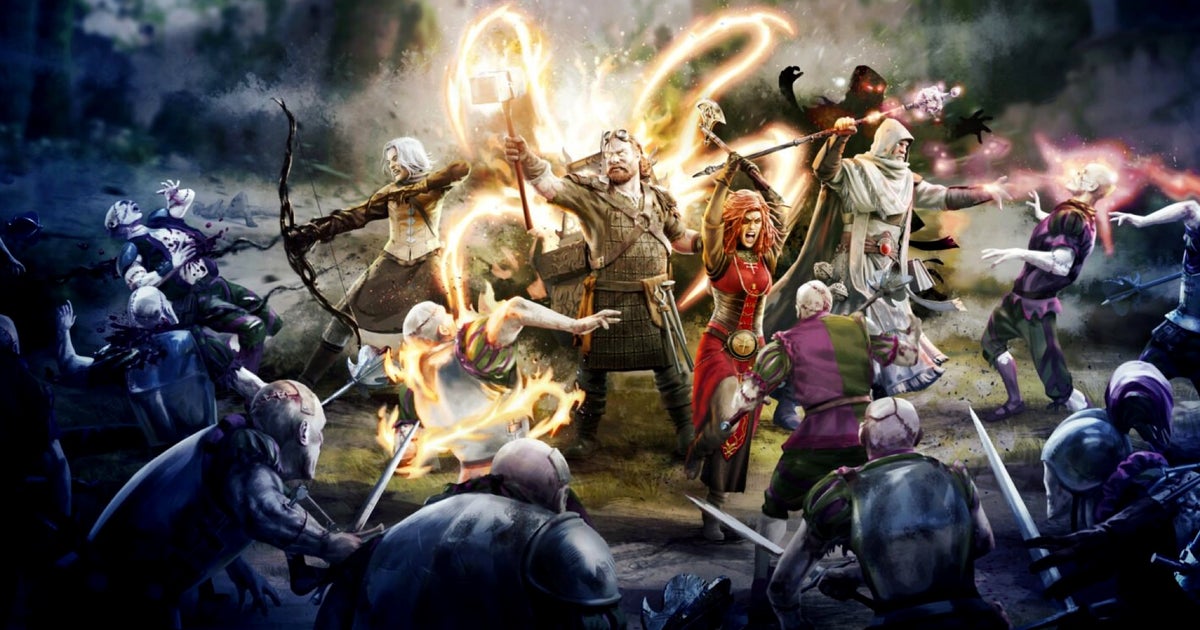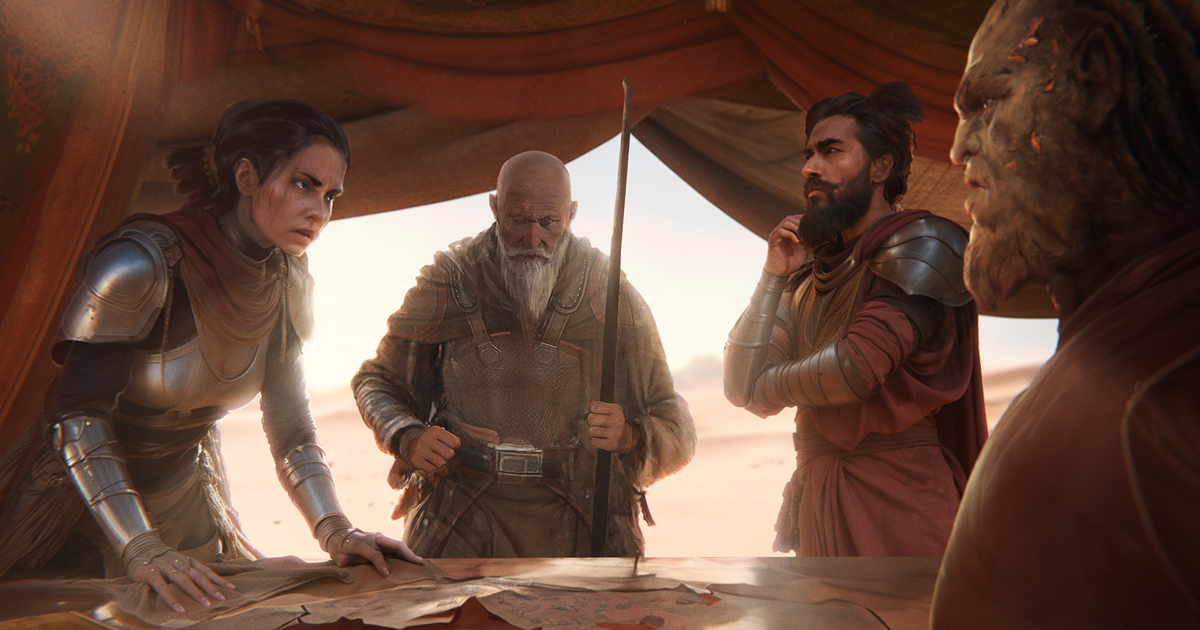A year on from Elden Ring's release, developer From Software has added ray tracing to the PlayStation 5, Xbox Series X and PC versions of the game with update 1.09. More specifically, it's ray-traced shadows and ambient occlusion that make the cut, although neither feature comes to the Xbox Series S version of the game. For those on PS5, Series X and PC, this is a welcome surprise - it's not since Scholars of the First Sin for Dark Souls 2 have we seen such a post-launch revamp of a Souls game's aesthetic.
Of course, whether the new features are worth enabling depends how successful the implementation is, with the big question being fairly straightforward: does the RT deliver enough of a visual upgrade to justify the performance cost on each of the three platforms? And did RT really deserve this focus when so many technical problems remain unchanged since launch?
First, let's cover off how to activate the RT features. On PS5 and Series X this appears as a new on/off toggle available when quality mode is enabled, while PC users get four RT settings that affect RT shadows and AO in combination: low, medium, high and maximum. The patch notes warn that the game's resolution and frame-rate can be affected by enabling RT, which is what we'd expect given that Elden Ring often doesn't run with much headroom and RT has both a CPU and GPU cost.
We began our testing with the PS5 version, where the difference upon enabling RT isn't conspicuous, instead creating a subtle difference in how shadows are rendered, something that synergises well with the game's dynamic time of day system that precludes accurate prebaked shadows. As the sun gets lower in the sky and shadows get longer, the effect becomes more obvious, with objects further from the ground getting more diffuse shadows than objects that are closer. This is particularly noticeable on shadows of tree branches which have a sharp, game-y outline with RT disabled; with RT, the shadows of higher branches produce softer and more natural results.
However, this upgrade to fidelity does affect the animation rate of some dynamic shadows. For example, at the Stormhill gate we noticed that the update rate on the shadow animation of a distant tree is lower with RT enabled. Previously, these shadows animated at the frame-rate of the game, but with RT enabled this drops to one half or one third of the animation rate. This creates a slight disconnect, but thankfully doesn't apply to most objects or characters you'll see, which are closer to their shadow and therefore their shadows update at the usual rate. As an aside, it's also a shame that even with RT enabled there's no shadow casting from torches or bonfires; this is a real missed opportunity given the narrative importance of fire in the Dark Souls series.
 Elden Ring's RT mode comes to PS5 and Series X with no difference in quality - but not Series S.
Elden Ring's RT mode comes to PS5 and Series X with no difference in quality - but not Series S.
Moving on, the second part of the RT upgrade is the addition of ray-traced ambient occlusion (RTAO). In effect, shadows for confined spaces such as the corners of dungeons, the roots of grass tufts and bushes are now more accurately simulated with ambient shade. This replaces the rather low-quality screen-space ambient occlusion (SSAO) used on console and PC as standard, which creates odd silhouette artefacts. The RT mode solves this issue and creates thicker, more consistent shading regardless of whether it appears within screen-space.
Again, there are some limitations here. For one, RTAO and RT shadows are missing in cutscenes on console, such as the introduction to the Margit boss, but return for gameplay afterwards. Shadow pop-in is also more noticeable with RT enabled. The limits of RTAO are different to SSAO, and Elden Ring appears to use a BVH structure that calculates RT shadows at different points in the map. We noticed shadows under barrels 'switch on' abruptly at a certain proximity to the player, whereas they're factored into the scene earlier using regular SSAO in quality mode. So it's something to bear in mind, but Elden Ring does look better overall for having RT enabled.
It's worth noting as well that these results apply equally to PS5 and Series X, with matching quality RT shadows and RTAO, and matching resolution targets of 2880x1620 (75 percent of 4K). Pixel counts do show some variance here indicative of dynamic resolution scaling, at 1560p at some points, but 1620p is the usual count. By contrast, the quality modes without RT enabled run at a full 4K, so you are sacrificing some detail to get RT.
 On PC, RTAO and RT shadows can be jointly set to off, low, medium, high or maximum.
On PC, RTAO and RT shadows can be jointly set to off, low, medium, high or maximum.
On PC, rather than a binary RT on/off we get four levels of RT quality as we mentioned earlier. Even on low, RT shadows look better than the non-RT shadows, while medium provides another noticeable step up in quality. Beyond this, the differences are much less pronounced, with the max setting looking very similar to medium and high for close subjects, with only distant shadows and AO really benefitting from higher RT settings. The high setting seems the most balanced option, as it enables both higher accuracy RT for sun-cast shadows and improved draw distance without a massive performance penalty. Consoles look to be using the high or max setting, based on side-by-side comparisons, with even the PC max setting exhibiting the same half-rate or third-rate animations that we saw at the Stormhill gate earlier.
So the RT upgrade is meaningful visually - but is it worth the performance penalty? Looking first at PS5, it's debatable. In one test, we saw frame-rate mode running at 60fps, quality mode at around 40-45fps and quality + RT mode at just 30fps. A 15-20fps penalty for enabling RT doesn't feel worthwhile, especially as it also comes with a resolution downgrade.
The fact that the bulk of play in RT mode runs at or just above 30fps is far from ideal, as it's below the PS5's VRR window and doesn't feel smooth at all. In fact, the game sometimes dips below the 30fps line in RT mode, which means that not not even a 30fps cap would provide a consistent experience.
 RT mode compounds the performance penalty of the quality mode, while also decreasing resolution.
RT mode compounds the performance penalty of the quality mode, while also decreasing resolution.
The result is that the RT mode is hardly ideal, though honestly it's the price you'd expect to pay for extra visual features layered on top of an experience that was already sub-60fps. The biggest problem is the existence of these sub-30fps drops, which genuinely affect the game's playability.
Switching to Series X, it's much the same - only slightly worse than PS5. The average frame-rate on its ray tracing mode is up to 5fps lower on average, which means that Series X is also more prone to sub-30fps drops. I've noticed the biggest drops on Series X relate to its dynamic settings and resolution, and a slight delay in the renderer keeping up with the action. For example, if we look to get the sky we get 45fps at 1620p - but looking downwards sharply, the resolution doesn't dip fast enough to avoid a trip below the 30fps line. Still, the turnout for Series X isn't radically different to PS5 otherwise, and with so much play hovering around 30fps, it's hard to recommend.
PC performance of course depends on your hardware, with our testing performed using an entry-level to mid-range spec: an AMD Ryzen 5 3600 CPU, paired with 16GB of DDR4-3600 RAM and an Nvidia RTX 2070 GPU. We're running at settings equivalent to PS5 and Series X's quality mode as well, opting for max where consoles use a hybrid setting, and at a fixed 1800p resolution given there's no DRS on PC.
Without RT, this configuration runs comfortably at 60fps much of the time, but the open area of Limgrave is more challenging, making it a good test run. We saw an average of 33fps with RT set to high versus 51fps with it disabled. Or to put it another way, that's a 35 percent performance hit from high RT. The RT mode also introduces extra hitches, with the frame-time spiking up to 180ms at worst - hardly ideal.
 Interestingly, the console RT mode seems closest to high or max on PC, with other differences visible here attributable to PC's higher resolution and longer draw distances for foliage.
Interestingly, the console RT mode seems closest to high or max on PC, with other differences visible here attributable to PC's higher resolution and longer draw distances for foliage.
The bottom line is that the PC release of Elden Ring has bigger priorities ahead of ray tracing: performance is still capped at 60fps, ultrawide displays aren't supported and there's no DLSS, FSR 2 or XeSS image reconstruction to boost performance and offset the cost of RT.
To sum up then, the addition of RT is a welcome surprise, an additive feature that pays dividends in terms of the presentation of shadows and ambient occlusion on PS5, Series X and PC. However, it's hard to see this as the feature most Elden Ring fans wanted, in the context of continuing sub-60fps performance on console; in the context of hitches and missing features on PC. And given its performance penalty, we can't recommend actually enabling RT for a playthrough of the game, although it might be good for taking screenshots.
More broadly, the decision to seemingly prioritise the addition of RT instead of fixing the game's technical shortfalls is baffling. Given how great the core game is, and how commercially successful it's been, we can only hope that it's a sign of more practical development to come.

 1 year ago
75
1 year ago
75








